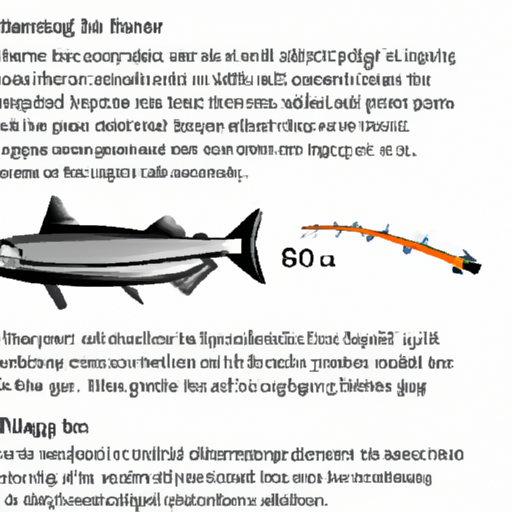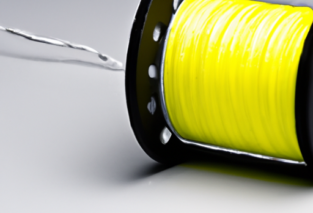Are you an avid angler, but finding it difficult to choose the right fishing rod material? Look no further! In this article, we will explore the different options available to you – graphite, fiberglass, and composite – to help you make an informed decision. Whether you’re a beginner or an experienced angler, understanding the characteristics and advantages of each material will ensure you find the perfect fishing rod for your needs. Get ready to enhance your fishing experience with the right rod material!

Factors to Consider
When it comes to choosing a fishing rod, there are several factors you should consider to ensure you make the right choice. These factors include the type of fishing you plan to do, the rod’s sensitivity, durability, weight, and price range. By carefully considering these factors, you can find a fishing rod that perfectly suits your needs and preferences.
Type of Fishing
The first factor to consider is the type of fishing you plan to do. Different fishing techniques require different types of rods, so it’s important to choose one that is specifically designed for your preferred fishing style. Whether you enjoy casting, trolling, fly fishing, ice fishing, or saltwater fishing, there is a fishing rod out there that is perfect for you.
Rod Sensitivity
Rod sensitivity refers to how well the rod transmits vibrations from the line to your hand. A sensitive rod allows you to feel even the slightest nibble, giving you the ability to detect light bites and increase your chances of a successful catch. When choosing a fishing rod, consider the sensitivity that your fishing technique demands and choose a rod with the appropriate level of sensitivity.
Durability
Durability is another important factor to consider when choosing a fishing rod. The durability of a rod depends on factors such as the materials used and the construction quality. A durable rod is essential, especially if you plan to use it frequently or in challenging environmental conditions. Consider how often you will be using the rod and the impact that various environmental elements may have on its durability.
Weight
The weight of a fishing rod plays a significant role in the overall comfort and performance of your fishing experience. A lightweight rod is more comfortable to handle, especially during long fishing sessions, as it reduces fatigue and strain on your arms. On the other hand, a heavier rod may provide more power and control, particularly when targeting larger fish. Consider your specific needs and preferences when choosing the weight of your fishing rod.
Price Range
The final factor to consider is the price range. Fishing rods come in a wide range of prices, and their cost is often determined by factors such as the materials used, brand reputation, and overall quality. You should set a budget that you are comfortable with. There are budget-friendly options available that offer great value for the price, as well as mid-range choices and high-end selections for those who are willing to invest more in their fishing gear.
Graphite Fishing Rods
Graphite fishing rods are a popular choice among anglers due to their unique composition and characteristics. These rods are made primarily of carbon fiber, which is combined with resin to create a lightweight and strong material. The carbon fiber composition provides the rod with excellent sensitivity, allowing you to feel even the most subtle movements in the water.
The strength and sensitivity of graphite fishing rods make them suitable for a wide range of fishing techniques. They are particularly well-suited for techniques that require precision and finesse, such as casting and fly fishing. Whether you are targeting freshwater species or saltwater fish, a graphite fishing rod can provide the sensitivity and strength you need to have a successful fishing trip.
There are several advantages to choosing a graphite fishing rod. Firstly, their lightweight nature makes them comfortable to handle, especially during long fishing sessions. Additionally, graphite rods offer excellent sensitivity, allowing you to detect light bites and improve your hooksets. Furthermore, the strength and flexibility of graphite rods make them resilient to bending, reducing the risk of breakage.
However, graphite fishing rods do have some disadvantages to consider. Due to their sensitivity, these rods may not be the best choice for deep-water or heavy-cover fishing, as they may not provide the necessary power to handle larger fish or tough conditions. Additionally, graphite rods are typically more expensive than fiberglass rods, which may be a deterrent for anglers on a tight budget.

Fiberglass Fishing Rods
Fiberglass fishing rods have been a staple in the fishing industry for many years, and for good reason. These rods are made from a composite material that combines fiberglass with a resin matrix, resulting in a durable and flexible rod. Fiberglass rods are renowned for their strength and flexibility, making them ideal for various fishing techniques and conditions.
The composition of fiberglass fishing rods offers several advantages. Firstly, their strength allows for powerful hooksets and the ability to handle larger fish. They also provide good flexibility, which makes them suitable for techniques such as trolling and saltwater fishing, where the rod needs to withstand the pull of big game fish. Additionally, fiberglass rods are more affordable compared to graphite rods, making them a popular choice for budget-conscious anglers.
However, there are a few disadvantages to consider when choosing a fiberglass fishing rod. Unlike graphite rods, fiberglass rods tend to be heavier, which can lead to fatigue during long fishing sessions. Furthermore, fiberglass rods may not offer the same level of sensitivity as graphite rods, making it more challenging to detect light bites. Lastly, fiberglass rods are more prone to breakage under extreme conditions, so they may not be the best choice for heavy cover fishing or situations where impact resistance is crucial.
Composite Fishing Rods
If you’re looking for a fishing rod that combines the best qualities of both graphite and fiberglass, a composite fishing rod may be the perfect option for you. As the name suggests, composite rods are made from a combination of materials, typically graphite and fiberglass, resulting in a versatile and well-rounded fishing rod.
The composition of composite fishing rods allows for a balanced combination of strength and sensitivity. These rods offer the power and flexibility of fiberglass, making them suitable for techniques such as trolling and targeting larger fish. At the same time, they provide the sensitivity and lightness of graphite, allowing for more finesse and precision in techniques like casting and fly fishing.
The main advantage of composite fishing rods is their versatility. They provide anglers with the ability to adapt their fishing technique to various conditions and target different fish species. This makes them an excellent choice for anglers who enjoy exploring different fishing styles and environments.
However, composite fishing rods do have some drawbacks to consider. Due to their combination of materials, these rods may be heavier than graphite rods, which can lead to increased fatigue during long fishing sessions. Additionally, composite rods may not offer the same level of sensitivity as pure graphite rods, making it slightly more challenging to detect light bites. Finally, composite rods tend to be more expensive compared to fiberglass rods, so they may not be the most budget-friendly option.

Fishing Techniques
There are various fishing techniques that anglers can choose from, depending on their preferences and the fish they are targeting. Each technique requires a specific type of fishing rod to achieve optimal results. Here are a few popular fishing techniques and the rods that are typically used for each:
Casting
Casting is a versatile technique that involves throwing a bait or lure into the water and retrieving it to attract fish. For casting, a long and flexible rod is typically used to achieve greater casting distance and accuracy. Both graphite and composite rods are suitable for casting, as they provide the necessary sensitivity and flexibility to control and manipulate the bait or lure.
Trolling
Trolling involves dragging bait or lures behind a moving boat to entice fish to strike. This technique requires a strong and durable rod that can handle the constant pressure and pulling motion. Fiberglass and composite rods are commonly used for trolling due to their strength and flexibility, which allow them to handle the resistance of the fish in the water.
Fly Fishing
Fly fishing is a technique that involves using lightweight flies to imitate insects and other prey on the water’s surface. This technique requires a highly sensitive rod that can accurately cast the fly and detect subtle strikes. Graphite rods are the preferred choice for fly fishing due to their exceptional sensitivity and lightness, which enable precise casting and enhanced bite detection.
Ice Fishing
Ice fishing is a popular technique for catching fish in frozen lakes and rivers. This technique requires specialized gear, including a short and sturdy ice fishing rod. These rods are typically made of fiberglass or composite materials, as they provide the necessary strength and durability to handle the harsh conditions of ice fishing.
Saltwater Fishing
Saltwater fishing involves catching fish in oceanic or coastal environments. This technique requires a rod that can withstand the corrosive effects of saltwater and the powerful resistance of saltwater fish. Both fiberglass and composite rods are commonly used for saltwater fishing due to their strength, flexibility, and resistance to corrosion.
Targeted Fish Species
The type of fish species you plan to target is an essential consideration when choosing a fishing rod. Different fish have different sizes, behaviors, and habitats, which will influence the type of rod that is most suitable. Here are a few examples of fish species and the rods that are often recommended for optimal fishing results:
Freshwater Species
Freshwater fish species, such as bass, trout, and catfish, require fishing rods that provide excellent sensitivity and the ability to detect subtle movements. Graphite rods are often recommended for freshwater fishing, as they offer high sensitivity and the necessary flexibility to control and manipulate the bait or lure effectively.
Saltwater Species
Saltwater species, including tuna, marlin, and snapper, require fishing rods that can withstand the corrosive effects of saltwater and the powerful resistance of these large and strong fish. Fiberglass and composite rods are commonly used for saltwater fishing, as they provide the necessary strength, flexibility, and resistance to corrosion.
Large Fish
Targeting large fish, such as muskies, pike, and tarpon, requires a fishing rod with significant strength and durability. Fiberglass and composite rods are often preferred for targeting large fish, as their strength allows for powerful hooksets and their flexibility helps absorb the intense fight that these fish put up.
Small Fish
If you plan to target smaller fish, such as panfish or trout, a more sensitive and lightweight rod may be suitable. Graphite rods are commonly recommended for this purpose, as their high sensitivity allows for detecting even the slightest bites and their lightness makes them easy to handle during long fishing sessions.
Predatory Fish
Predatory fish, such as walleye, pike, and bass, require fishing rods that offer a combination of strength, sensitivity, and accuracy. Graphite and composite rods are often recommended for targeting predatory fish, as they provide the necessary power and sensitivity to increase the chances of a successful catch.

Rod Sensitivity Needs
The sensitivity of a fishing rod is crucial for various fishing applications, as it allows anglers to detect light bites and make precise hooksets. Depending on your fishing technique and the fish species you are targeting, your rod sensitivity needs may vary. Here are a few examples of situations where rod sensitivity is particularly important:
Sensitive Applications
Certain fishing techniques, such as finesse fishing or fishing with soft plastics, require a high level of sensitivity to detect delicate movements and subtle bites. Graphite rods, known for their exceptional sensitivity, are often recommended for these applications, as they allow anglers to feel even the most subtle movements in the water.
Strong Hooksets
When targeting fish species with tough mouths or when fishing in heavy cover, strong hooksets are essential to secure the catch. A sensitive rod allows you to feel the fish’s movements and react quickly with a powerful hookset. Graphite and composite rods, known for their strength and flexibility, can provide the necessary combination of sensitivity and power for strong hooksets.
Detecting Light Bites
In situations where fish are biting lightly or exhibiting minimal movement, having a sensitive rod can make all the difference. Graphite rods are highly sensitive, allowing you to detect even the slightest bites. This enables you to react quickly and increase your chances of hooking the fish successfully.
Deepwater or Heavy Cover Fishing
When fishing in deep water or heavy cover, where fish might be hidden or difficult to detect, a sensitive rod can help detect subtle movements that indicate the presence of fish. Graphite rods, with their high sensitivity, can help you feel these movements and allow for precise control and manipulation of the bait or lure in challenging environments.
Rod Durability
The durability of a fishing rod is an important factor to consider, especially if you plan to use the rod frequently or in challenging environmental conditions. The durability of a rod depends on various factors, including the materials used and the construction quality. Here are a few factors to consider when assessing the durability of a fishing rod:
Frequency of Use
If you plan to use your fishing rod frequently, it’s essential to choose one that can withstand regular wear and tear. Fishing rods made from durable materials, such as fiberglass or composite, are often recommended for frequent use, as they are less prone to breakage and damage.
Environmental Conditions
Environmental conditions, such as exposure to saltwater or extreme temperatures, can impact the durability of a fishing rod. Saltwater fishing, in particular, requires rods that are resistant to corrosion. Fiberglass and composite rods are known for their resistance to corrosion and are often preferred for saltwater fishing.
Impact Resistance
If you often fish in areas with heavy cover or rocky terrain, a fishing rod with good impact resistance is crucial. Fiberglass rods, known for their durability and flexibility, are often recommended for fishing in situations where the rod may be subjected to impacts or rough handling.

Rod Weight
The weight of a fishing rod can significantly impact your comfort and performance during a fishing trip. It’s essential to find a rod that is comfortable to handle, especially during long fishing sessions, as a heavy rod can lead to fatigue and strain on your arms. Consider the following when assessing the weight of a fishing rod:
Casting Comfort
A lightweight rod can greatly enhance casting comfort, allowing for easy and accurate casting motions. Graphite rods, known for their lightness, are often recommended for casting techniques, as they reduce the strain on your arm and provide a more comfortable fishing experience.
Long Fishing Sessions
If you plan to spend extended periods of time fishing, a lightweight rod is essential to reduce fatigue. Fiberglass rods, known for their strength and flexibility, can be a good choice for long fishing sessions, as they provide the necessary durability without adding excessive weight.
Reduced Fatigue
A heavy rod can quickly lead to fatigue, especially when continuously casting or fighting with big fish. Graphite and composite rods, known for their lightweight nature, are often preferred by anglers seeking reduced fatigue and enhanced performance during their fishing trips.
Price Range
The price range of fishing rods can vary significantly, depending on factors such as the materials used, brand reputation, and overall quality. It’s important to set a budget that you are comfortable with and find a rod that offers the best value for the price. Here are a few price ranges and the options available:
Budget-Friendly Options
For anglers on a tight budget, there are plenty of budget-friendly fishing rod options available. These rods may be made of fiberglass or lower-grade graphite and are generally more affordable. While they may not offer the same level of performance or durability as higher-end options, they can still provide a satisfactory fishing experience for casual anglers or beginners.
Mid-Range Choices
Mid-range fishing rods offer a good balance between price and quality. These rods are typically made of higher-grade graphite or composite materials, providing improved sensitivity, strength, and durability compared to budget-friendly options. They offer a suitable choice for anglers who are looking for enhanced performance without breaking the bank.
High-End Selections
For anglers who are willing to invest more in their fishing gear, high-end fishing rods offer the highest level of performance, durability, and quality. These rods are often made of top-grade graphite or composite materials and are crafted with exceptional attention to detail. High-end rods are designed for experienced anglers who demand the best performance and reliability from their gear.
Choosing the right fishing rod material can greatly enhance your fishing experience. By considering factors such as the type of fishing you plan to do, the rod’s sensitivity, durability, weight, and price range, you can find a fishing rod that meets your specific needs and preferences. So, take the time to research and compare different options, and soon you’ll be ready to hit the water with your perfect fishing rod.





